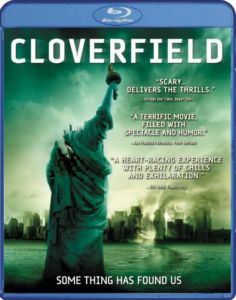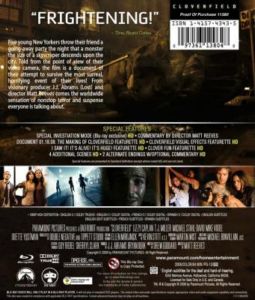| Plot |
| One of the first things a viewer notices about Cloverfield is that it doesn't play by ordinary storytelling rules, making this intriguing horror film as much a novelty as an event. Told from the vertiginous point-of-view of a camcorder-wielding group of friends, Cloverfield begins like a primetime television soap opera about young Manhattanites coping with changes in their personal lives. Rob (Michael Stahl-David) is leaving New York to take an executive job at a company in Japan. At his goodbye party in a crowded loft, Rob’s brother Jason (Mike Vogel) hands a camcorder to best friend Hud (T.J. Miller), who proceeds to tape the proceedings over old footage of Rob’s ex-girlfriend, Beth (Odette Yustman)--images shot during happy times in that now-defunct relationship. Naturally, Beth shows up at the party with a new beau, bumming Rob out completely. Just before one's eyes glaze over from all this heartbreaking stuff (captured by Hud, who's something of a doofus, in laughably shaky camerawork), the unexpected happens: New York is suddenly under attack from a Godzilla-like monster stomping through midtown and destroying everything and everybody in sight. Rob and company hit the streets, but rather than run with other evacuees, they head toward the center of the storm so that Rob can rescue an injured Beth. There are casualties along the way, but the journey into fear is fascinating and immediate if emotionally remote--a consequence of seeing these proceedings through the singular, subjective perspective of a camcorder and of a story that intentionally leaves major questions unanswered: Who or what is this monster? Where did it come from? The lack of a backstory, and spare views of the marauding creature, are clever ways by producer J.J. Abrams and director Matt Reeves to keep an audience focused exclusively on what’s on the screen. But it also makes Cloverfield curiously uninvolving. Ultimately, Cloverfield, with its spectacular effects brilliantly woven into a home-video look, is a celebration of infinite possibilities in this age of accessible, digital media. --Tom Keogh |
|

